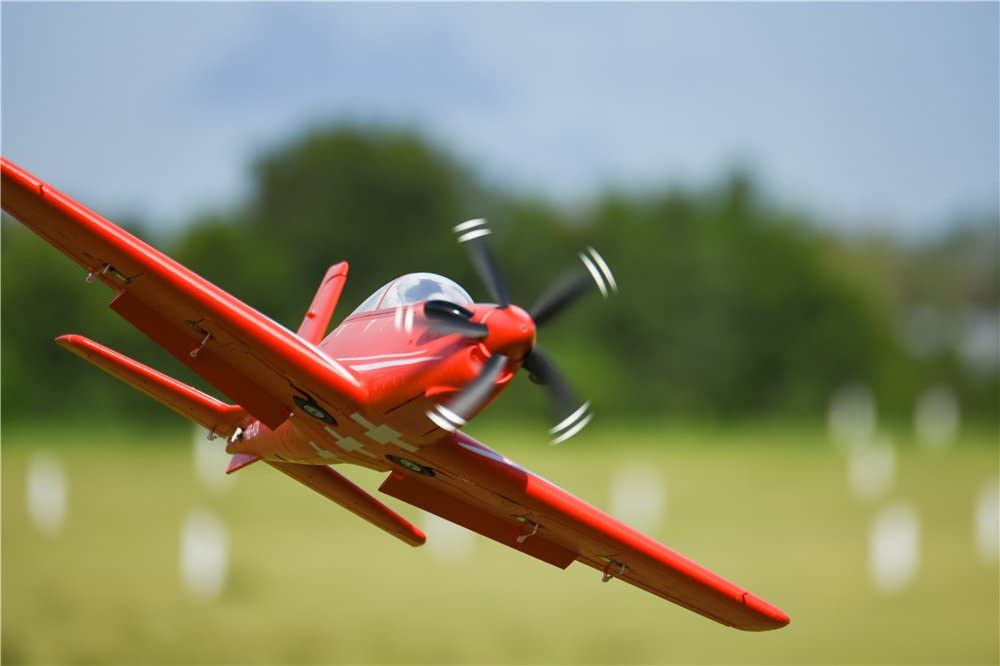Electronics for RC planes, gliders and drones

Electronics are usually the most complex part of any RC project, especially when you need something more than just controlling motors on your aircraft. This complexity is mainly due to the lack of clear guides or posts that explain the basic ideas behind RC electronics and how they work. That’s why I decided to create this post, based on our experience at TinkerFlight, to explain how RC planes work (from an electronics perspective) and what we recommend using.
How RC Aircraft Are Controlled
To control almost any RC aircraft (plane, glider, drone, etc.), you need two basic components:
- A transmitter or remote controller with joysticks and buttons that sends messages to the aircraft via radio signals.
- A receiver or circuit board installed in the aircraft that receives messages from the transmitter and performs actions such as regulating motor speed, updating rudder or elevator positions, or forwarding messages to other boards (for example, a flight controller). Additionally, the receiver can send messages back to the transmitter with information such as altitude, speed, GPS location, etc.
- (Optional) A flight controller is a board that receives messages from the receiver and manages the aircraft's behavior. Some receivers have simple built-in flight controllers that can control BLDC/DC/servo motors.
Types of RC Systems
- Proprietary systems
Companies like DJI, FlySky, and FrSky produce RC electronics that use their own protocols (which define how messages are structured and sent between the transmitter and receiver). This means your transmitter and receiver must support the same protocol and version. These systems often use complex terminology in product descriptions. We don’t recommend using proprietary systems because you become fully dependent on the company's documentation and development. If they discontinue the system, your receiver and transmitter may become useless. - Open protocol systems (recommended)
We recommend systems based on open protocols, like ExpressLRS (ELRS). These allow you to mix hardware from different manufacturers, add custom behavior to your aircraft, and avoid being locked into a specific ecosystem. Popular companies producing ELRS-compatible transmitters and receivers can be found here. - Custom systems
You can develop your own RC system using ESP32S3 or ESP32C3 development boards. By using Arduino, ESP-IDF, and ESP-NOW as the communication protocol (which supports long-range communication up to 400–500 meters), you can create a fully custom RC system. I’ll write a dedicated post with code examples for this soon.
Transmitters
Transmitters are similar to gamepads with joysticks, buttons, and sliders. Before buying a transmitter, make sure your receiver supports the same protocol and version. I recommend avoiding expensive transmitters with unnecessary features like high-quality displays, excessive buttons, or complex settings. A transmitter’s job is simple: capture your input (joystick, button, slider positions), send it to the aircraft, and display basic aircraft info (e.g., battery status). All aircraft behavior settings should be configured directly via a web browser connected to the receiver (more on this later).
An example of an affordable, effective transmitter is the RadioMaster Pocket Radio Controller with built-in ELRS protocol, which costs around $55–$65 depending on the color you choose.
Receivers
Receivers are circuit boards installed in the aircraft that act based on messages received from the transmitter (e.g., increasing motor speed, adjusting control surfaces). There are three main types of receivers:
- Receivers with built-in PWM outputs
These receivers can directly control BLDC/DC and servo motors without needing additional boards. You can think of them as receivers with a simple built-in flight controller. However, their functionality is limited to basic motor and LED control. - Receivers that forward messages
These forward messages from the transmitter to other boards (e.g., a flight controller) via wired connections. - Hybrid receivers
These combine the two types above, with both PWM outputs and the ability to forward messages to external boards.
Flight Controller
A flight controller (or flight computer) is a board installed on the aircraft that controls its behavior based on messages from the transmitter and data from sensors (e.g., gyroscope, barometer, GPS). Some receivers have basic flight controllers built-in, especially in simple RC planes like the Piper J-3 Cub you can find on AliExpress. I’ll cover flight controllers in more detail in a future post, as they deserve their own guide.
Recommended Setup
So, what do we recommend for a flexible and upgradable setup? RC planes and drones are hobbies where you’ll constantly want to enhance and improve your system. Based on this idea, we recommend starting with and adding features as needed:
- ELRS-based transmitter, such as the RadioMaster Pocket
- ELRS-based receiver with PWM and UART, like this one: RadioMaster ER6 2.4GHz ELRS PWM Receiver or a smaller receiver from Aliexpress. This allows you to fly right away and expand your setup later by connecting a flight controller over UART.
- (For drones; required) A flight controller with open-source firmware, such as the SpeedyBee F405.
- (For planes and gliders; optional) Honestly, we haven’t yet found a great flight controller designed specifically for RC planes and gliders that works out of the box. Most flight controllers are drone-oriented. In this case, we recommend using a custom Arduino-based flight controller if you want something customizable or use a flight controller that has the plane mode. If you know of a good flight controller designed for planes, please send us a link at hey@tinkerflight.com.
That’s it for today! Subscribe to our blog updates to get notified when new guides are published.
